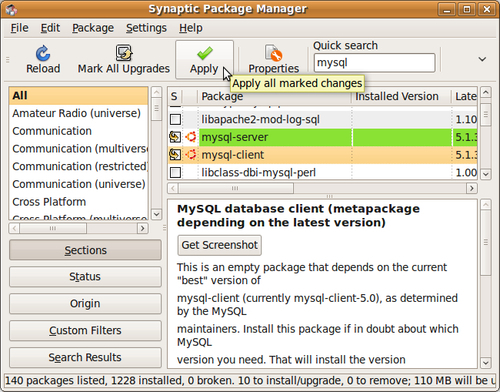I've been using MySQL for as long as I can remember using web applications, PHP, and Java. I still can't believe it is open source, which means it's free, well, at least the Community Server. There is also an Enterprise Server where you receive support and a lot of goodies from the MySQL team for a certain price, but as we're already experts at installing things on Linux, let's go and try the Community MySQL Edition.
Open the Synaptic Package Manager and type
mysqlin the Quick search button. Scroll down the right panel until you locate themysql-serverandmysql-clientpackages. Right-click on themysql-serverpackage and select the Mark for installation option, then click on the Mark button in the Mark additional required changes? dialog. Right-click on themysql-clientpackage and select the Mark for installation option as well. Then click on the Apply button in the Synaptic Package Manager main screen:
Click on the Apply button in the Summary dialog...



